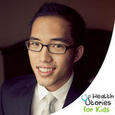ADHD
ADHD stands for Attention Deficit Hyperactivity Disorder. The condition has also been referred to as attention deficit disorder (ADD). This is now considered to be an outdated term, as it doesn't include the potential for hyperactivity. According to theCenters for Disease Control and Prevention, approximately 11% of children 4-17 years of age (6.4 million) have been diagnosed with ADHD as of 2011, making it one of the most common childhood disorders. Though it is common, ADHD is a complex mental disorder, which can adversely affect a persons work, schooling, or interpersonal relationships.
The causes of ADHD are unknown. Studies have shown links between toxic metals like lead and ADHD. Another possible cause is drug, alcohol, or nicotine use during pregnancy.
It is typically diagnosed in childhood, yet there are many adults with ADHD. While it may have only been diagnosed later in life, most adults with ADHD have shown symptoms since childhood. The symptoms of ADHD vary from case to case and are difficult to recognize. ADHD expresses itself differently in each person, and has been separated into three types: Inattentive, Hyperactive-Impulsive, and Combined. Here we will focus on the Inattentive type of ADHD.
Inattentive Type ADHD
When someone uses the term ADD, they are typically referring to Inattentive ADHD. This means a person is showing enough symptoms of inattention, but isn’t necessarily hyperactive or impulsive. Someone may be diagnosed as inattentive if they are easily distracted, forgetful in daily activities, or have trouble organizing. Inattentive ADHD people tend to have trouble focusing on tasks or activities that require long periods of mental focus, such as routine work. They tend to make careless mistakes in their work, and become easily sidetracked. Inattentive ADHD types may ignore speakers, even when being directly spoken to, and may have difficulty following instructions. They may become bored easily, and constantly find themselves daydreaming. They may become confused easily and seem as though they are not paying attention. Inattentive ADHD types tend to process information more slowly than their peers.
Many of these symptoms are within the normal realm of experience. The difference to note here is that a person with inattentive type ADHD experiences these symptoms to such a degree that they impede on their ability to function normally in day to day life. They experience the majority of these symptoms on a daily basis for a long period of time. If you feel you may have Inattentive type ADHD, talk with your doctor, detailing all of your symptoms. They may evaluate you and see if a treatment plan is right for you.
Treatment Plans
ADHD is most commonly treated with stimulant medications and/or behavioral therapy. Stimulant medications don't cure the disease, rather they treat the symptoms. Stimulants may help you to stay on task and daydream less. Many drugs are long lasting, taken once daily, they provide you with an entire day's treatment. The CDC estimates that between 70 and 80 percent of people with ADHD who take stimulant medications respond well to treatment. Side effects with stimulant medications include dry mouth, anxiety or irritability, trouble sleeping, loss of appetite, dizziness, nausea, weight loss, and diarrhea.
Behavioral therapy, or behavioral intervention, is a way to help rid yourself or your child of distractions. This may make it easier to manage symptoms, with or without medication. Write down what you need to do in the day, and then do it. Following your plans can help ease the anxiety of the mind. When giving instructions to someone with ADHD, be clear and quick. Use as few words as possible. Turning off radios, televisions, and electronics when not in use can cut down on the "static" of the mind, making it easier to focus on the task at hand.
ADHD may not have a cure, but it doesn't have to get you bogged down. There are plenty of treatment options to manage the symptoms of inattentive type ADHD. Talk with your doctor for an evaluation, and follow through with your action plan.
To learn more about health topics that concern the whole family, please visit www.healthstoriesforkids.com
Brian Wu graduated with a Bachelor of Science degree in Physiology and Neurobiology. Currently, he holds a PhD and is an MD candidate (KSOM, USC) in integrative biology and disease. He is also an experienced writer and editor for many prestigious web pages. Brian values the ability of all ages to learn from the power of stories. His mission is to write about health conditions, educational topics and life situations in an entertaining way in order to help children understand their own life conditions and daily circumstances.

Post new comment
Please Register or Login to post new comment.